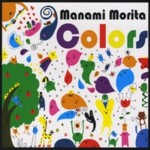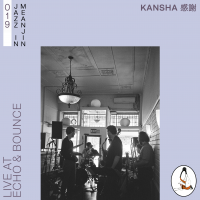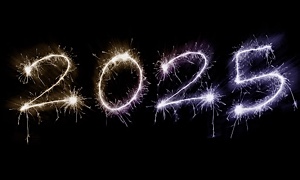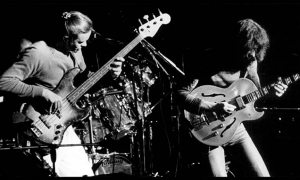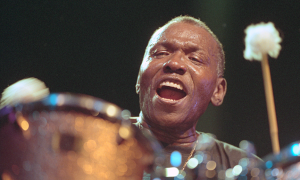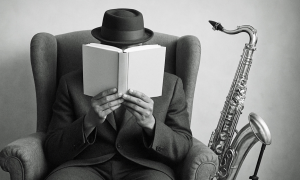Home » Jazz Articles » New York Beat » Copenhagen JazzHouse: The Evolution of a Jazz Club
Copenhagen JazzHouse: The Evolution of a Jazz Club
Years ago I had initially encountered the Danish jazz scene at Cafe Monmartre and found it thriving as Thad Jones had, during the '60s, infused the Danish Radio Big band with new ideas and energy. The room was one of the most intriguing European jazz venues and the scene of regular visits from Stan Getz (who had married a Danish woman), Dexter Gordon, Ben Webster and (earlier) Bud Powell. The beboppers who had moved to Europe during the rock 'n' roll juggernaut of the '50s were of course also regular visitors. They included Art Farmer, Johnny Griffin and Ed Thigpen (who passed away at 79 on January 13th while I was in Copenhagen).
I had reviewed an appearance of the Danish Radio Big band at Sweet Basil during the time they had barnstormed the states about 15 years ago and on my last visit to Copenhagen some 5 years ago had written about the Tivoli jazz band. I had also monitored the work of Jim McNeely when he assumed the role of chief conductor of the Danish Radio Orchestra awhile back.
I guess my closest understanding about the history of Denmark and jazz had come during the late '60s when I was producing concerts for and writing about Kai Winding.
I provide the aforementioned chronicle to illustrate my connection with and deep interest in the curious and charged relationship that the Danes have always had with jazz. That interest became freshly infused as I wandered into Copenhagen JazzHouse during a record January cold spell.
The club is the only one I know of that is run by a well-known jazz musician. Lennart Ginman is at the forefront of Danish Jazz and performs regularly with James Moody and Adam Nussbaum. In the past he has worked with Kirk Lightsey, Lee Konitz, Jim McNeely, Clark Terry, Benny Golson, Scott Hamilton, Harry "Sweets" Edison, Duke Jordan and Art Farmer. In addition to these American stars, Ginman has performed with many European luminaries and composed music for celebrated orchestras and festivals.
What is most compelling about Copenhagen JazzHouse is Ginman's programming. He has structured the billing along ten "Profiles" which reflect specific music styles. Thus "Swing Pigalle" presents older band music, "Blip!" focuses on electronic music, "Jazz Aspect" showcases experimentation, "Green House" presents rising youngsters, and "Classic Jazz Club" presents bebop, stride and such. Other "profiles" are more adventurous: "Relate" has music which isn't jazz but utilizes improvisation, "Jazz 'n' Poetry " recalls a tradition that Art D'Lugoff had at the old Village gate, "Int. Jazz" presents international performers and "World Class" encourages patrons to dance to Flamenco, Manding, Gnawa and various Afro sounds.
On my first evening "Ear Witness" a group in the "World Class" profile performed. The musicians were from Hungary, Mauritius, Cameroon and Denmark and played music distantly echoing that of the Joe Zawinul Syndicate. Bassist Linley Marthe led the group which executed innovative, if occasionally repetitious, selections with aplomb. The following night a "Curator" or jazz conceptualist presented "Free Variations on Thelonious Monk" featuring a quartet of Danish musicians expressing very free ideas. The sets were deftly performed and the audacious improvisations had me thinking that Monk would have applauded the evening.
The atmosphere at Copenhagen JazzHouse is informal, the decor is charming and the crowd is serious. The room was packed on both nights and the audiences displayed that close attention which is so pervasive among European jazz patrons. People never whisper or otherwise distract listeners. I always feel as if I'm in a museum or classical concert hall when I attend jazz performances in Europe. And that, after all, is perfectly fitting for such an important art form.
Tags
PREVIOUS / NEXT
Support All About Jazz
 All About Jazz has been a pillar of jazz since 1995, championing it as an art form and, more importantly, supporting the musicians who make it. Our enduring commitment has made "AAJ" one of the most culturally important websites of its kind, read by hundreds of thousands of fans, musicians and industry figures every month.
All About Jazz has been a pillar of jazz since 1995, championing it as an art form and, more importantly, supporting the musicians who make it. Our enduring commitment has made "AAJ" one of the most culturally important websites of its kind, read by hundreds of thousands of fans, musicians and industry figures every month.


